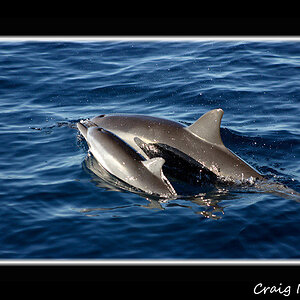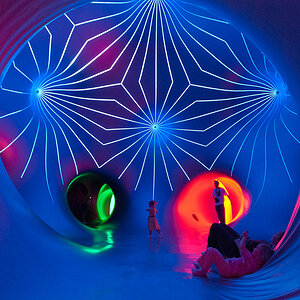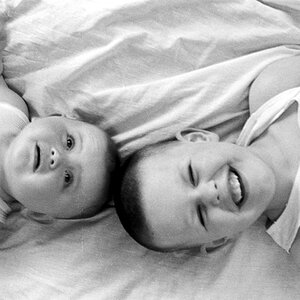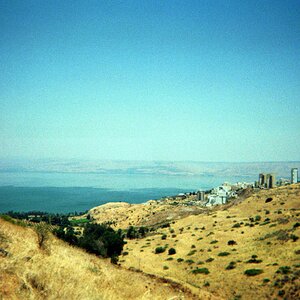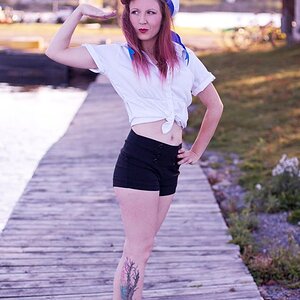Derrel
Mr. Rain Cloud
- Joined
- Jul 23, 2009
- Messages
- 48,225
- Reaction score
- 18,941
- Location
- USA
- Website
- www.pbase.com
- Can others edit my Photos
- Photos OK to edit
The D40 has a pretty good sensor for a small,light, unobtrusive camera. it does pretty well,and when shot with good lenses, it produces excellent results.
Google up Ken Rockwell's photography site, and you can find tons of Nikon D40 articles.
The majority of Nikon's current, modern AF lens lineup is made up AF-S lenses which will focus on the D40 and other members of the five-member "baby Nikon" class which is made up of the D40-D40x-D60-D3000-D5000. Thehighly-desirable, class-leading Nikon AF lenses that will not autofocus on a D40 are for the most part, pro-grade lenses like the 85/1.4,105 and 135 DC, and the 80-400 VR--in other words, lenses costing three or four times more than a D40 body. Most beginners want small,light zooms, which are all AF-S.
By the time a beginner is ready for a 105mm f/2 AF-D Defocus Control Nikkor lens, he's not going to be wanting an APS-C body. The caution about the D40's lack of autofocusing is usually from Canon shooters who want to make it sound like some huge,glaring flaw in the Nikon system. BUT, due to its lack of in-body AF system, the D40 will mount any Nikon F-mount accessory made since 1959,with no need for adapters or any modification of old lenses or lens accessories like extension tubes or old,manual focus teleconverters, macro converters, slide duplicator,microscope or telescope adapters, etc. This opens up a pool of over 50 million Nikkor lenses, plus probably 30-40 million used lenses in F-mount that will pop on and shoot on all the baby Nikons. So, the pawn shop lenses, and grandpa's old 1960's Nikkormat lenses....those will pop right on the little D40,and will shoot pictures! Same with affordable, used manual focusing macro lenses and low-cost extension tubes--the baby Nikons are ideal candidates for hooking up to literally tens of millions of older lenses.
Google up Ken Rockwell's photography site, and you can find tons of Nikon D40 articles.
The majority of Nikon's current, modern AF lens lineup is made up AF-S lenses which will focus on the D40 and other members of the five-member "baby Nikon" class which is made up of the D40-D40x-D60-D3000-D5000. Thehighly-desirable, class-leading Nikon AF lenses that will not autofocus on a D40 are for the most part, pro-grade lenses like the 85/1.4,105 and 135 DC, and the 80-400 VR--in other words, lenses costing three or four times more than a D40 body. Most beginners want small,light zooms, which are all AF-S.
By the time a beginner is ready for a 105mm f/2 AF-D Defocus Control Nikkor lens, he's not going to be wanting an APS-C body. The caution about the D40's lack of autofocusing is usually from Canon shooters who want to make it sound like some huge,glaring flaw in the Nikon system. BUT, due to its lack of in-body AF system, the D40 will mount any Nikon F-mount accessory made since 1959,with no need for adapters or any modification of old lenses or lens accessories like extension tubes or old,manual focus teleconverters, macro converters, slide duplicator,microscope or telescope adapters, etc. This opens up a pool of over 50 million Nikkor lenses, plus probably 30-40 million used lenses in F-mount that will pop on and shoot on all the baby Nikons. So, the pawn shop lenses, and grandpa's old 1960's Nikkormat lenses....those will pop right on the little D40,and will shoot pictures! Same with affordable, used manual focusing macro lenses and low-cost extension tubes--the baby Nikons are ideal candidates for hooking up to literally tens of millions of older lenses.


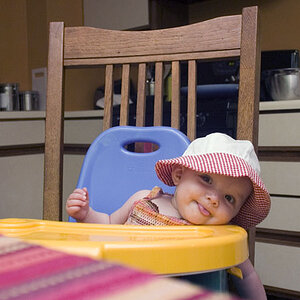
![[No title]](/data/xfmg/thumbnail/32/32177-3a3d923fa1584c6ef7d6602aaa24fbc6.jpg?1619735235)

![[No title]](/data/xfmg/thumbnail/37/37624-7f9c9a5c8c7bcb5e62f67313e2e48dbc.jpg?1619738153)
